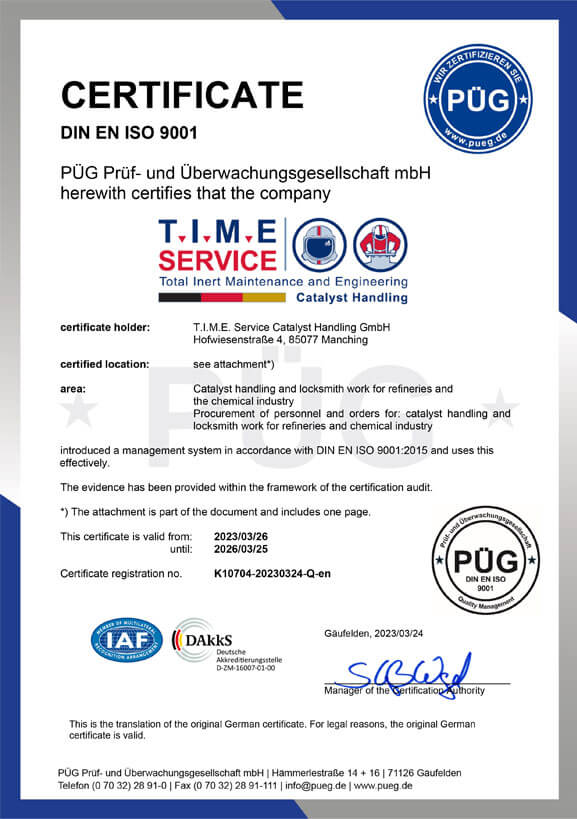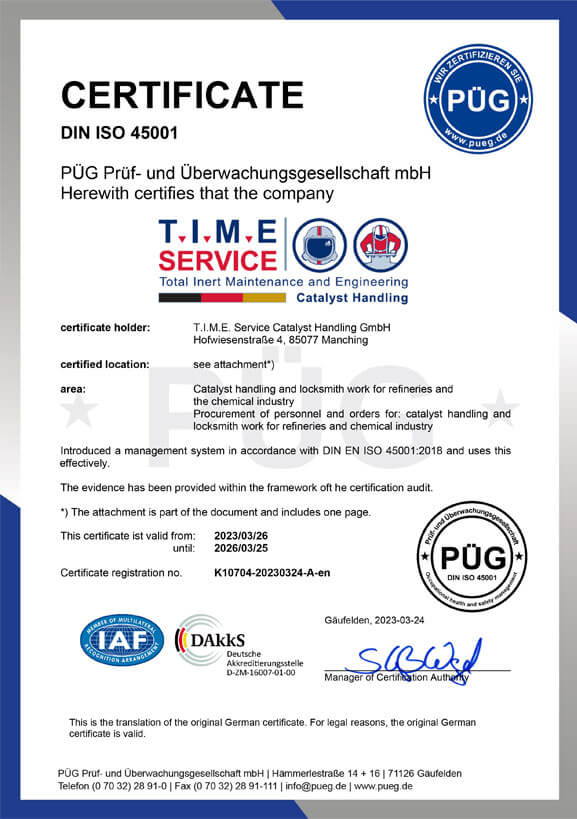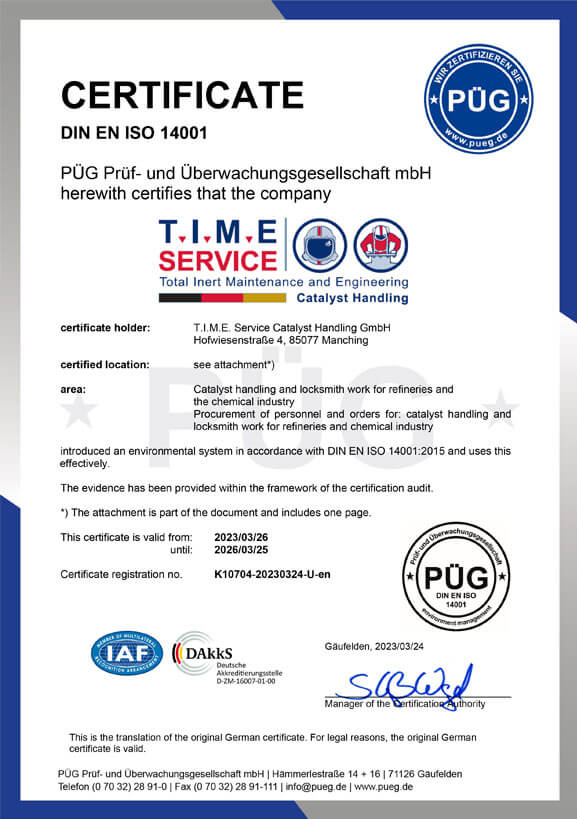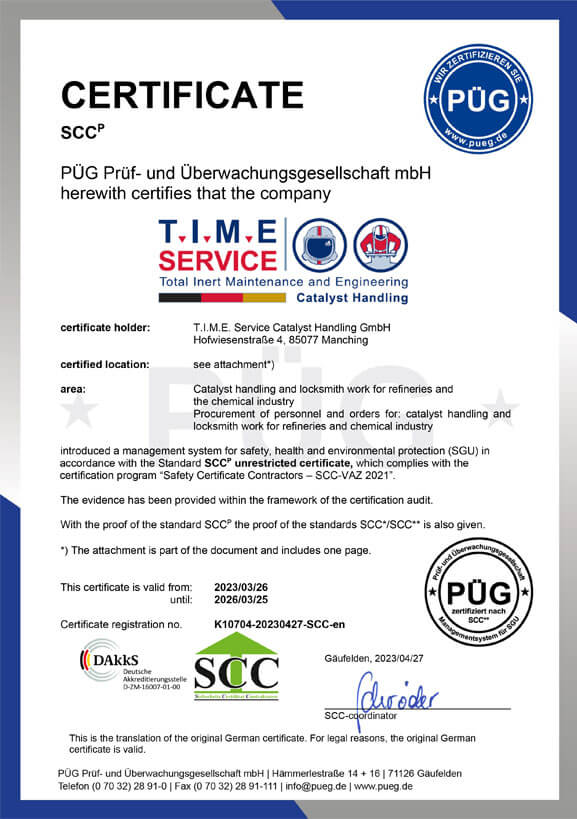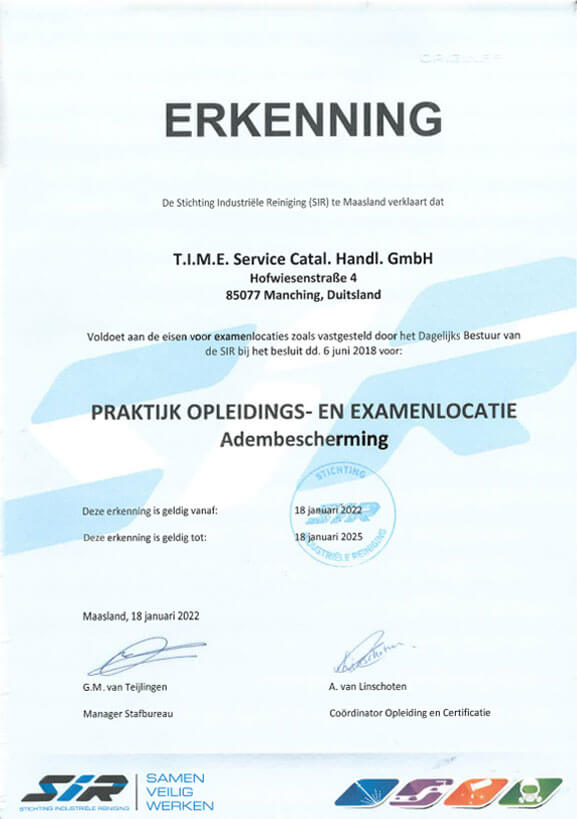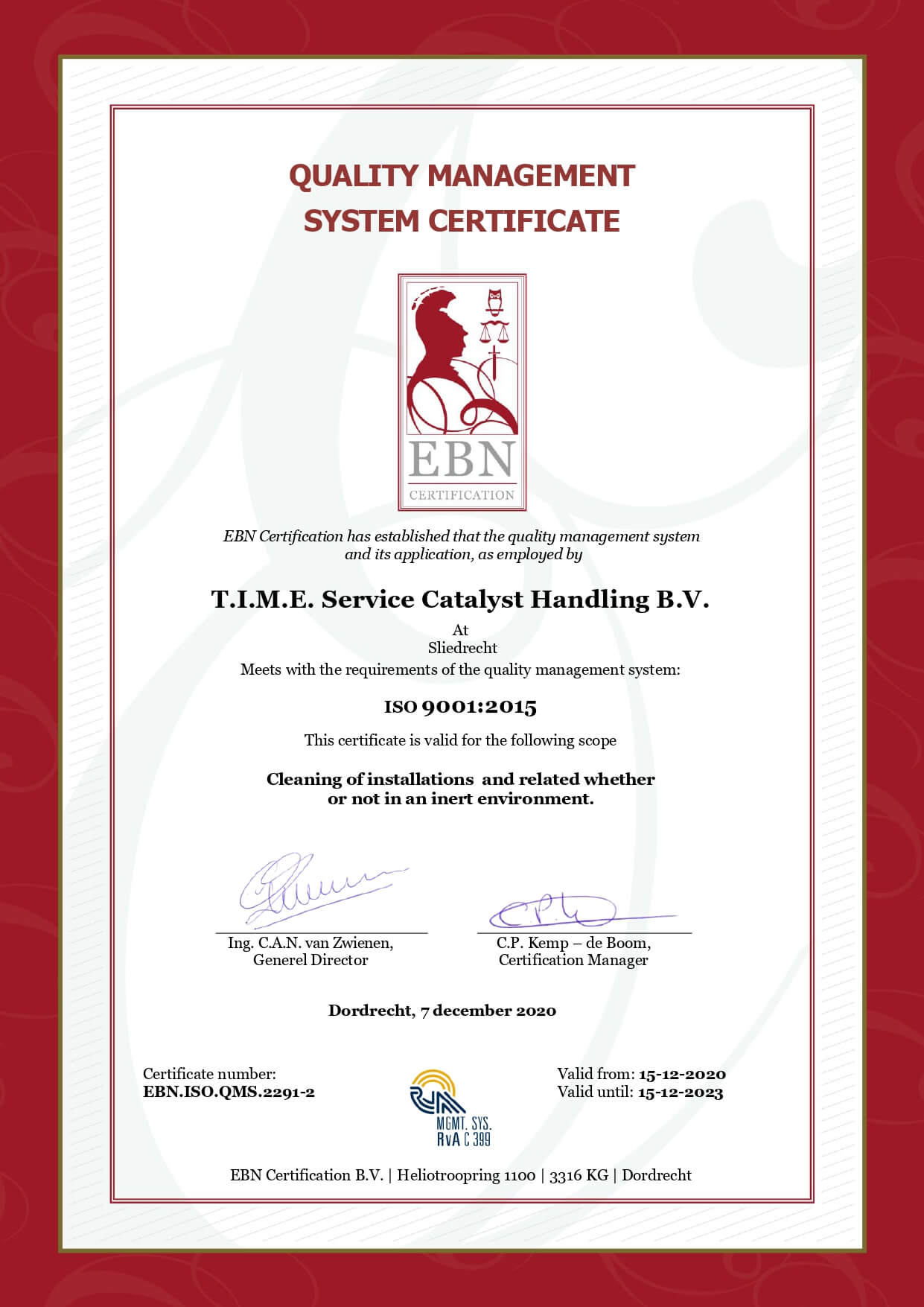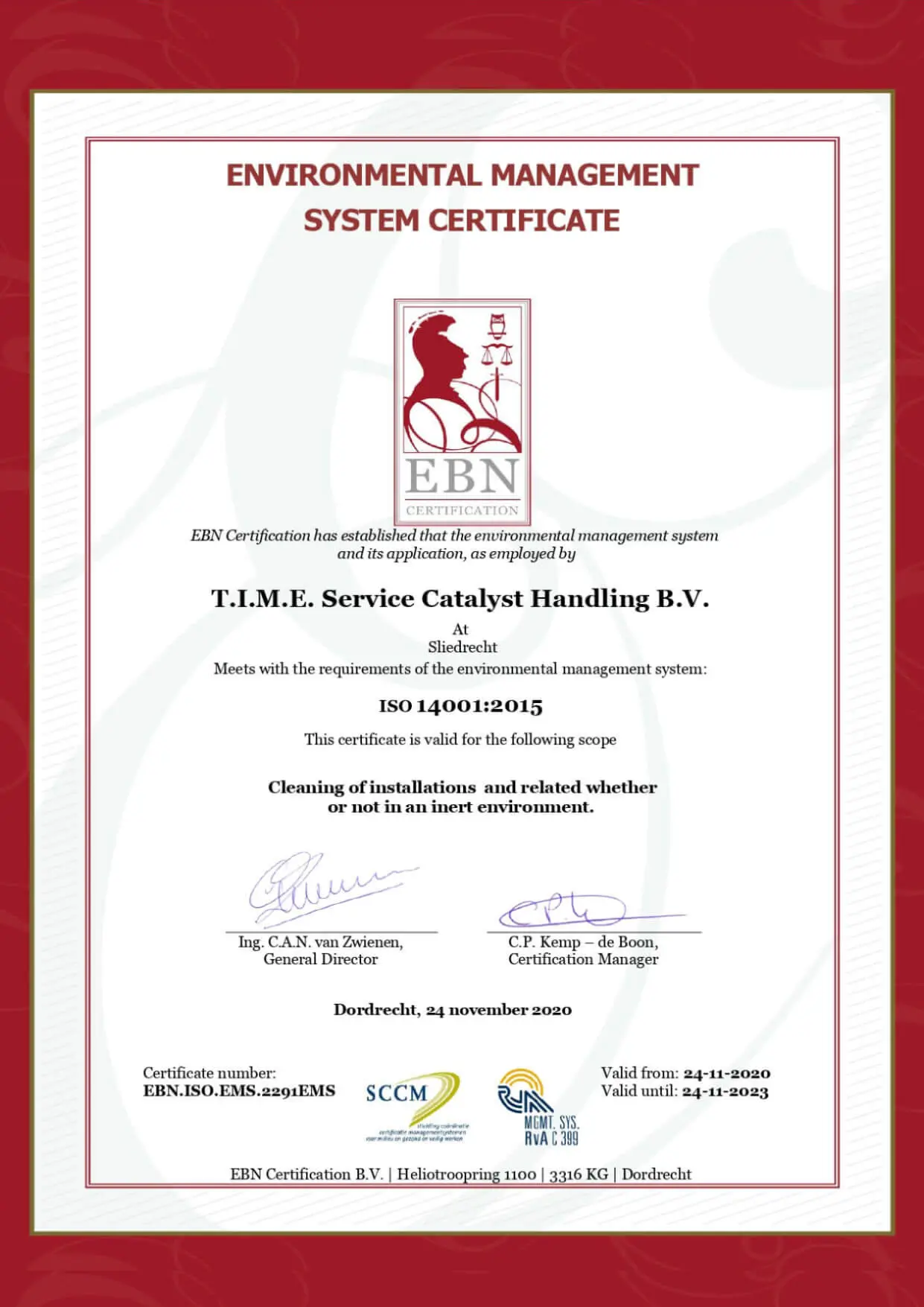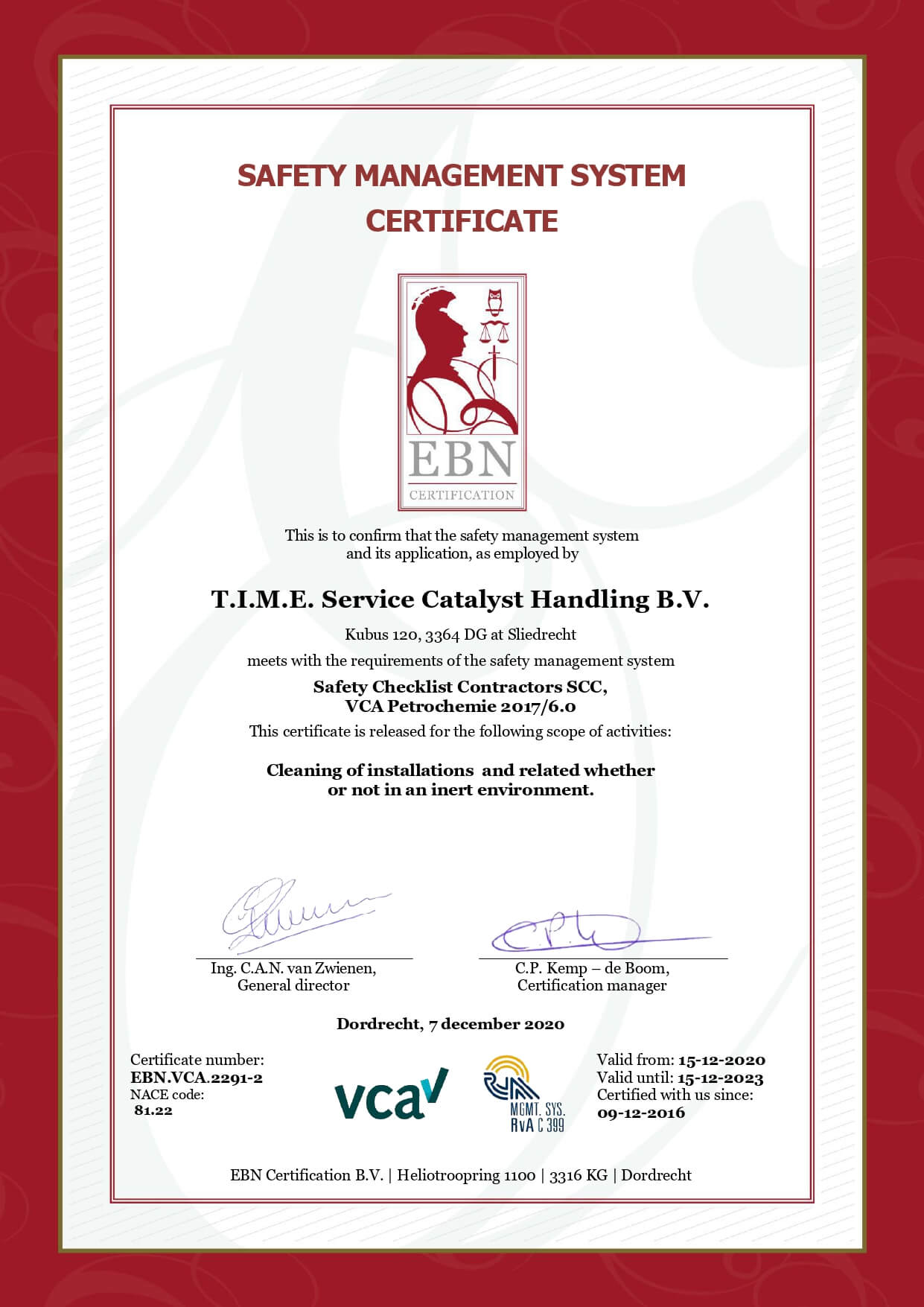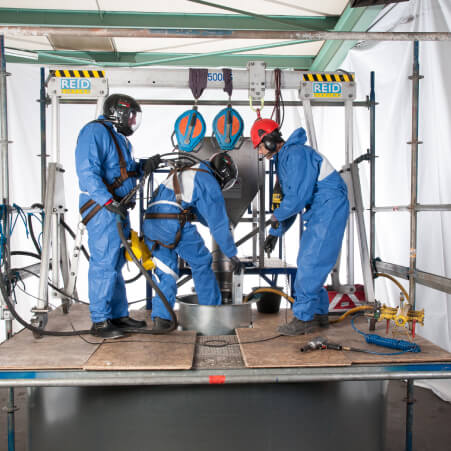Quality, Safety, Health and Environmental Protection are the main objectives of T.I.M.E. Service when performing catalyst handling, particularly when working under inert conditions.
Each activity is defined in mandatory work instructions. Ongoing risk analysis continuously improves safety. Our procedures include continuous measurement of O2 and hydrocarbon levels in the danger zone, as well as visual monitoring of the breathing air supply and work areas to ensure maximum safety.


